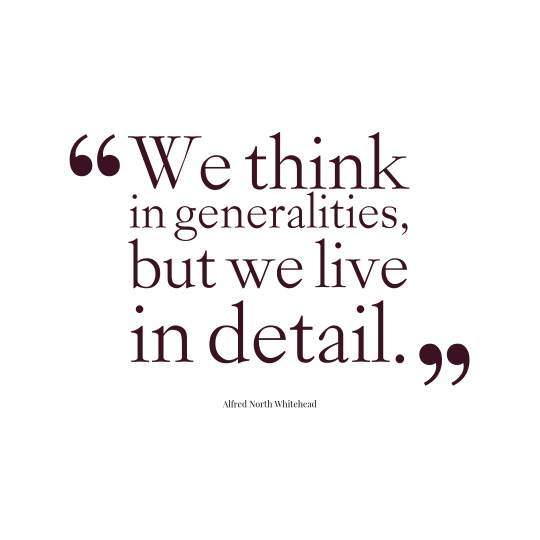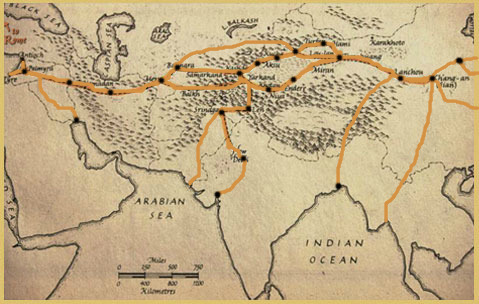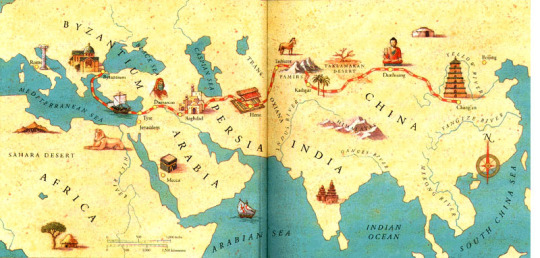The Human Beings have inhabited nearly all habitable parts of the planet now. The disciplines of Geography, History, Sociology, Economics & Planning has produced tremendous stories of his imagination & creative potential. There are stories of individuals on one hand & there are collective stories of Human Settlements on the other which are not an outcome of instant development rather a testament of Human Skills of settling his settlement brick by brick over multiple generations.
Don't wanna be here? Send us removal request.
Link
A human being migrates to an urban outfit with aspirations of increased living standard and enhanced overall quality of life. But what does he receive - suspicious water supply, polluted air quality, vehicles all around on the roads, residences nearly touching the sky and what not. The migrant accepts them thinking it as a transformed way of living one’s life till he realises the cumulative trap of urban issues and problems he/she has trapped into. Exceptions are always there and therefore barring some cities nearly every city is overdosed by technological solutions to even a minuscule of an issue rather than eyeing them as a part of the human system which itself is a part of the universal natural system. The situation gets worse in cities which without even realising their own potential blindly follow the ideas of another in the absence of proper inter-disciplinary knowledge. The planning of human settlements can become one of the toughest jobs of the universe if perceived through isolated windows with a set framework or it can become one of the easiest works to accomplish if done with an inter-dependent understanding of an urban system.
#cities#urban planning#human#development#smartcities#urbanisation#water pollution#air pollution#traffic congestion#skyscrapers#system#humansettlements#urbanism
3 notes
·
View notes
Link
Human Settlements of early and medieval times got shaped around water, may it be in the form of a river or of an ocean. The former saw development of big settlements along with the development of rich culture and the latter acted as a facilitator to transport culturally produced items to other parts of the world by means of Oceans and Seas in the absence of Airways or any connecting mode of transportation.
#Cities#HumanSettlements#Urban#Development#Guangzhou#Miami#Mumbai#Chennai#Kochi#Jakarta#Kolkata#Surat#Oceans#ClimateChange#GlobalWarming
1 note
·
View note
Link
Nuuk the capital & the largest city of Greenland lies in the municipal region of Sermersoog which is a newly constructed municipality in Greenland in operations from 2009 formed after merging former municipalities of Easter and South-Western Greenland. Isertoq lies in the same region and is a very small human settlement with a population of 93 in 2010 which has decreased to nearly half from 1991 when it was 171 and by 27 per cent if compared with the levels of 2000. It has a maritime influenced tundra type of climate with temperature limits ranging from -16 degrees in winters to a maximum of around 7 degrees in summers. The conditions must be tough to live at times but the natural beauty around showcasing its ever present serenity would have made it a bit easier, comfortable & meaningful for the local population.
1 note
·
View note
Link
The population of the village is around 100 while that of the goats is 500. Eight goat farms produce around 10,000 kg of cheese every year which is exported along with the locally produced goat sausage. This small human settlement imbibes in itself the natural scenic beauty along with a distinct human culture which developed and flourished in a close knit system for the most part of its developmental story.
0 notes
Link
The Cinque Terre was declared as the UNESCO’s Mankind’s World Heritage in 1997 and is now part of Italy’s list of National Parks and Protected Marine area with the objective of protecting this distinct human cultural heritage along with conserving the natural beauty which has provided it with a platform to flourish. In 2015, around 2.5 million tourist visited Cinque Terre which is a huge number for a comparatively smaller site and the administration henceforth decided to put a limit to it which came in the form of 1.5 million to preserve locally lying rich heritage both natural and cultural.
0 notes
Link
Supai is around 13 kilometres away from the nearest road. The mail service is still carried out by mules which makes it one of a very few such spaces in the United States where connectivity is almost ancient. It has been referred to as the most remote community in the contiguous United States of America by the U.S. Department of Agriculture.
#Supai#UnitedStatesOfAmerica#HumanSettlements#Tribes#Agriculture#GrandCanyon#Havasu#WaterFalls#Remote
0 notes
Link
0 notes
Link
0 notes
Photo

Its a pretty true quote going well with the human society of the ongoing civilization.
0 notes
Link
Smart cities has almost succeeded last decade’s most trending topic of achieving sustainable development in India (for words used while discussing urban or human development) and concepts have also just become like the new sale in the market which comes up every other year. Major community seem to be getting excited already about their new settlements which are still in the conceptual stage but a question is still rolling in the brains of some people – will they be really smart?
#urban planning#cities#smart cities#Human settlement#urban progression#india#sustainable#development
0 notes
Quote
The human race must be big enough to admit their mistakes, smart enough to profit from them, and strong enough to correct them if we all are looking for a better life ahead.
0 notes
Photo


One of the first Trade routes developed by human beings - 'The Silk Route'. It can also be looked as the foundation for all the transit advancements made by the race of humanity.
1 note
·
View note
Link
The urbanization policies and reforms carried away in the Republic of India have by far seemed to have not attained their defined goals. The reasons may be many – adoption of the foreign models into the Indian context without studying the prevailing Indian conditions, lack of co-operative planning between different sectors/authorities, lack of public awareness to avail the government run programs and initiatives, rapid growth of population, to name some, but it would have been the prime duty of those involved to look into all those factors that defines the planning, growth and development of the urban settlements.
With the change in the central government and announcement of 100 new smart cities by the Urban Ministry, India seem to have created a chance for itself to release the ever increasing pressure on the existing cities – but the planning regulations to be followed and its implementation process is quite doubtful.
#cities#human#settlement#urban#development#planning#sustainable#smart#megacities#delhi#mumbai#kolkata#digital
1 note
·
View note
Link
Dhaka with a population of above 14 million is the world’s most densely megacity with a density of around 115,000 persons/sq. mile which is much higher if compared with its counterparts. Mumbai with its closest rival has the density of around 82,000 persons/sq mile with cities like Delhi, Seoul, Mexico, Tehran has less than 1/3rd of Dhaka’s density. With the population set to rise – conditions may be even more drastic. For those in favour of densification of cities and urban spaces should see through another window – from the window of carrying capacity of the environment. The carrying capacity has to be studied properly before applying any such densification policies in any region of the world.
#cities#human settlement#urban planning#dhaka#bangladesh#southasia#dense#development#mumbai#delhi#seoul#mexico#tehran
2 notes
·
View notes
Link
Stockholm has a large and varied ecological structure. In the City of Stockholm, parks and green space occupy 56 km2 (26%), and water area cover 28 km2 (13%) of the total area of 215 km2. This is considerably more water and green space than possessed by most other cities, and gives Stockholm its unique character. The city is situated on a number of islands between the fresh water lake Mc’laren and the brackish Baltic Sea. Stockholm also has a special feature with a number of green wedges pointing towards the city centre. This allows the ecosystems close to the city centre to be linked with larger ecosystems outside of the city.
0 notes
Link
The general advantage discussed with the theory is that it reduces the ecological footprint as a whole by reducing the mobility per person, but there’s no use of reducing it when it is not inter-related with the city’s ecosystem as a whole and basic human living values in general. It may seem to increase the productivity of the citizens but the productivity factor also holds co-relation with the quality of life of the inhabitants. Also, densification will bring in some changes in the cultural transformation section as well and it should also be studied while implementing such concept.
1 note
·
View note
Link
We see a lot of street art posts on Bored Panda, but where is the best street art actually made? Where can we see it?
It takes buildings to paint on, for one. Street art sometimes seems to feed on an artist’s desire to fight the oppressive brick and concrete walls that surround them on all sides, so the buildings they paint on are at once canvases and catalysts for their rebellion. The city also needs to have a thriving community of underground artists who are itching to communicate their artistic and philosophical ideas to as many people as they can.
2 notes
·
View notes